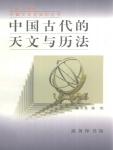Chapter 1 The words written in front of the first chapter
Perhaps before the generation of writing, people knew to use the growth of plants and the whereabouts of animals to judge the seasons, which was a necessary knowledge for early agricultural production.The initial stage of any nation's development has to go through the process of phenological timing. Even in the 1950s, this custom was still practiced in some ethnic minority areas in China.
Although phenology is related to the movement of the sun, due to the unpredictable climate, the same phenological characteristics in different years are often misplaced for a few days or more than ten days, which is much rougher than the later observation timing.Observing the time, that is, using the astrology to determine the season. "Shangshu·Yao Dian" describes: In ancient times, people in ancient times marked mid-spring with the bird star (α Hydra) at the southern meridian at sunrise and dusk, and the fire (α Scorpio) at the southern meridian at the highest sun and dusk. In midsummer, mid-autumn is marked by the sunset due west and the false star (β Aquarius) at the southern meridian at first twilight, and midwinter is marked by the lowest sun and the Pleiades (η Taurus η) at the southern meridian at first twilight.
Phenological timing and observation timing are both passive timing. When people have a better understanding of astronomical laws, especially the length of the return year, they can predict the seasons in advance, and the calendar came into being.There must have been a calendar in the Xia and Shang Dynasties, but because written records are rare, its content is still under study.During the Spring and Autumn Period and the Warring States Period, six calendars such as Huangdi, Zhuanxu, Xia, Shang, Zhou, and Lu were popular.The length of their return year is 3651/4 days, but the epoch is different and the beginning of the year is different.
During the 500 years of the Spring and Autumn Period and the Warring States Period (770 BC-222 BC), regimes changed frequently, and astrologers did their own thing and became popular, which aroused the attention of princes and princes to star observation.Thus, ancient Chinese astronomy formed two main lines of calendar and astronomy.

